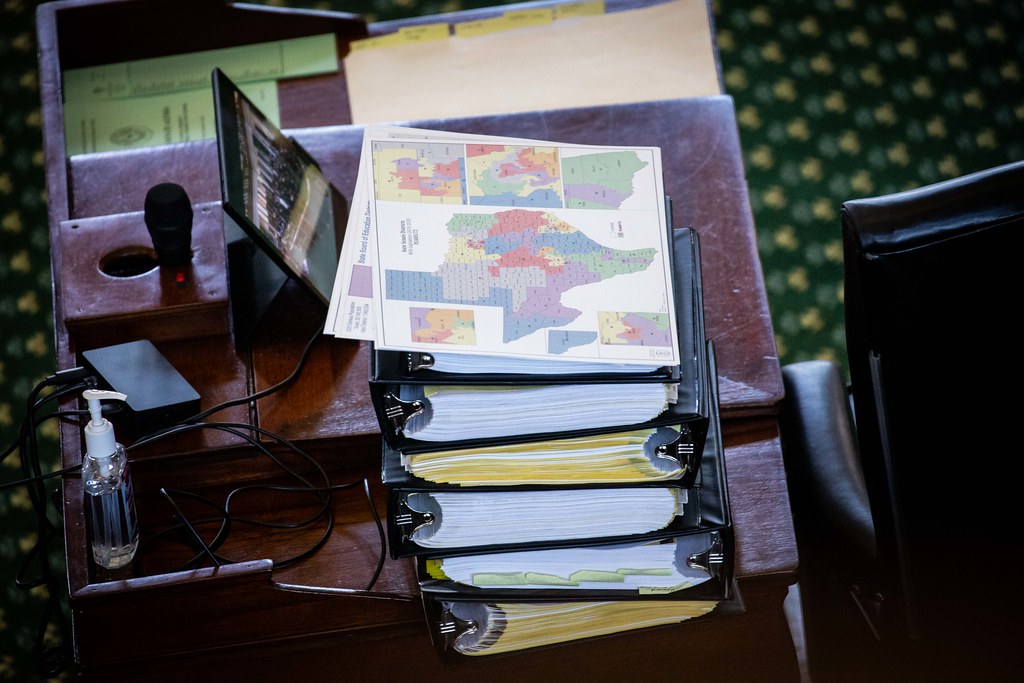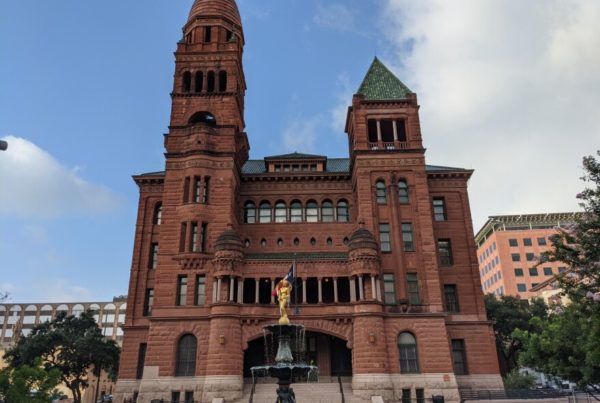When Texas lawmakers approved new district maps in a recent special session, it was the first time since the 1980s that those maps did not need to go through a federal approval process to ensure they were fair under the Voting Rights Act.
Texas redistricting maps had been subject to “preclearance” because of the state’s record for enacting changes that had either a discriminatory purpose or effect. But a 2013 U.S. Supreme Court ruling removed Texas’ requirement.
Now, the U.S. Department of Justice claims Texas’ new maps violate the Voting Rights Act.
Washington University in St. Louis Associate Professor of Law Travis Crum says “Texas has been a perennial target for redistricting litigation because it is not only an important state but it is an incredibly diverse and changing state.”
He explains what stood out to the DOJ about Texas’ maps and what happens next. Listen to the audio in the player above or read the transcript below.
This transcript has been edited lightly for clarity.
Texas Standard: Which maps exactly is the DOJ taking issue with in its lawsuit? And how does it claim they violate the Voting Rights Act?
Travis Crum: The Department of Justice is challenging both the Congressional district map that is used to elect members of the U.S. House of Representatives and also the Texas State House map. So we have two maps being challenged in this lawsuit.
Is the contention that the voting power of people of color, who have made up much of Texas’ growth, is diluted because of these maps?
That’s correct. One of the main arguments in the DOJ’s complaint is that, with regards to the Congressional district map, Texas went from having 36 seats in Congress to 38 seats in Congress. However, the two new districts that were created by the Texas State Legislature have majority Anglo voting majorities. And so, even though Latinos and African Americans were the principal drivers of growth in Texas, they do not get new districts in which they are effective voting majorities.
The Texas maps face several legal challenges. How is the DOJ’s lawsuit different?
I think that there are many challenges being filed against the Texas map because the stakes are very high. And the NAACP and a coalition of other civil rights groups, as you noted, have filed another lawsuit. Texas has argued that those groups lack what’s called “a cause of action” to sue under the statute. Now, courts around the country have found an implied cause of action under the Voting Rights Acts. The Supreme Court has never actually determined that, and Justice Gorsuch in a concurring opinion last term flagged that issue, but I think it’s pretty clear that there is a right to sue under the Voting Rights Act for private plaintiffs. And the federal government is claiming that both of these maps violate the Voting Rights Act and they are also bringing what’s called “an intentional discrimination claim” – claiming that Texas intentionally destroyed Congressional District 23, a West Texas District, in which Latino voters could have been an effective voting majority but Texas dismantled that district.
The DOJ is asking a federal court to prevent any election from taking place using these maps. We have primaries scheduled for March 1. What happens?
I think you’re going to see some very fast-paced litigation. And some of this is caused by the delays in the Census. You know, normally, census data would have been released in the early part of 2020 but, because of the pandemic and because of some of the delays associated with President Trump’s attempt to exclude undocumented immigrants for the Congressional reapportionment process, this data came out several months later. And so, although you would normally have a lot of litigation in any redistricting cycle, this redistricting cycle is going to be quite different in terms of how fast-paced it’s going to be.
Why the focus on Texas? There were redistricting battles all over the nation this year.
I think we’re going to have to wait and see if the DOJ files suit against any other maps that other states are creating. Some states have proposed maps but haven’t actually enacted them into law and you can’t file a lawsuit until the ink is dry on the bill. But I think Texas has been a perennial target for redistricting litigation because it is not only an important state but it is an incredibly diverse and changing state. And so the fact that you have a state where the African American and Hispanic populations, and also the Asian American populations are growing at a very fast clip, that creates a lot of opportunities for racial vote dilution, the “packing and cracking” of minority voters and Texas has not had a redistricting map either precleared or upheld in a court hearing as original enacted for several decades. And so, it’s not surprising that Texas is yet again at the heart of redistricting challenges this cycle.














